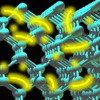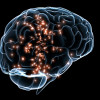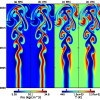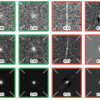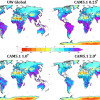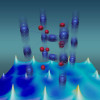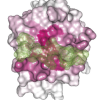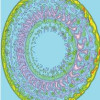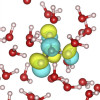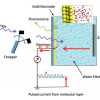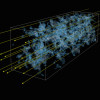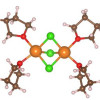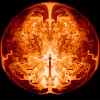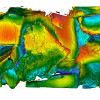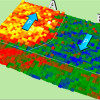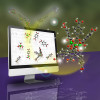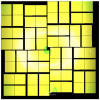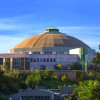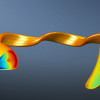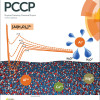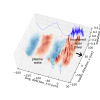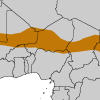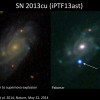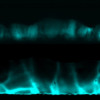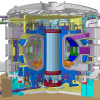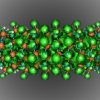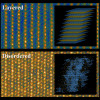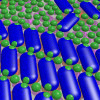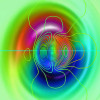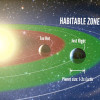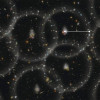Science News
Laser, Supercomputer Measure Speedy Electrons in Silicon
In silicon, electrons attached to atoms in the crystal lattice can be mobilized into the conduction band by light or voltage. UC Berkeley scientists used a laser to take snapshots of this very brief band-gap jump and timed it at 450 attoseconds. Read More »
A Standard for Neuroscience Data
BrainFormat, a neuroscience data standardization framework developed at Berkeley Lab, is a strong contender to contribute to a data format and storage standard for the neuroscience research community. In conjunction with this work, NERSC is also contributing to the CRCNS data-sharing portal, which will allow neuroscience researchers worldwide to easily share files without having to download any special software. Read More »
Berkeley Lab Particle Accelerator Sets World Record
Using one of the most powerful lasers in the world, Berkeley Lab researchers have accelerated subatomic particles to the highest energies ever recorded from a compact accelerator. Computer simulations run at NERSC allowed them to test the experimental setup before ever turning on the laser. Read More »
Optimized Algorithms Boost Combustion Research
Turbulent combustion simulations, which provide input to the design of more fuel-efficient combustion systems, have gotten their own efficiency boost, thanks to researchers from Berkeley Lab's Computational Research Division. Read More »
Berkeley Algorithms Help Researchers Understand Dark Energy
The process of identifying and tracking Type Ia supernovae requires scientists to scrupulously monitor the night sky for slight changes, a task that would be extremely tedious and time-consuming for the Dark Energy Survey (DES) without some novel computational tools developed at NERSC by researchers at Berkeley Lab and UC Berkeley. Read More »
Supercomputers Fuel Global High-Resolution Climate Models
Not long ago, it would have taken several years to run a high-resolution simulation on a global climate model. But using supercomputing resources at NERSC, Berkeley Lab climate scientist Michael Wehner was able to complete a run in just three months. Read More »
How Atomic Vibrations Transform Vanadium Dioxide
A team led by Oak Ridge National Laboratory has made an important advancement in understanding a classic transition-metal oxide, vanadium dioxide, by quantifying the thermodynamic forces driving the transformation. Read More »
Mathematical Models Shed New Light on Cancer Mutations
Using mathematical modeling methods traditionally considered the property of statistical physics and artificial intelligence, researchers at Harvard Medical School have developed a way to identify important cancer mutations. Read More »
Using Radio Waves to Control Fusion Plasma Density
Recent fusion experiments on the DIII-D tokamak at General Atomics and the Alcator C-Mod tokamak at MIT showed that beaming microwaves into the center of the plasma can be used to control the density in the center of the plasma. Read More »
Probing the Surprising Secrets of Carbonic Acid
Berkeley Lab researchers used the Advanced Light Source and NERSC to gain valuable new insights into carbonic acid, with important implications for both geological and biological concerns. Read More »
Water and Gold: A Promising Mix for Future Batteries
For the first time, researchers at Lawrence Berkeley National Laboratory have observed the molecular structure of liquid water at a gold surface under different charging conditions, paving the way for future studies of electrochemical interfaces that exist in current and prototype batteries. Calculations run at NERSC helped them better understand the chemistry. Read More »
Supercomputer Helps Model 3D Map of Adolescent Universe
Using extremely faint light from galaxies 10.8 billion light years away, scientists have created one of the most complete, three-dimensional maps of a slice of the adolescent universe—just 3 billion years after the Big Bang. Read More »
Dispelling a Misconception About Mg-Ion Batteries
A series of computer simulations run at NERSC has dispelled a long-standing misconception about magnesium-ions in the electrolyte that transports the ions between a battery’s electrodes. Read More »
Simulations Reveal Unusual Death for Ancient Stars
Those primordial stars—between 55,000 and 56,000 times the mass of our Sun, or solar masses—may have died unusually. In death, these objects—among the Universe’s first-generation of stars—would have exploded as supernovae and burned completely, leaving no remnant black hole behind. Read More »
Pore Models Track Reactions in Underground Carbon Capture
Using tailor-made software running on top-tier supercomputers, a Lawrence Berkeley National Laboratory team is creating microscopic pore-scale simulations that complement or push beyond laboratory findings. The models of microscopic underground pores could help scientists evaluate ways to store carbon dioxide produced by power plants, keeping it from contributing to global climate change. The models could be a first, says David Trebotich, the project’s principal investigator. “I’m not… Read More »
Interface Surprises May Motivate Novel Oxide Electronic Devices
A research team led by Oak Ridge National Laboratory has discovered that intrinsic electric fields can drive oxygen diffusion at interfaces in engineered thin films made of complex oxides. This may serve as a basis for design of new electronic devices utilizing both electrons and ions. Read More »
Mapping the March to Methodical Materials
Scientists at DOE’s Pacific Northwest National Laboratory have determined the individual reactions and the energy needed at each step to form the basic unit of a popular MOF. Read More »
New Catalyst Converts CO₂ to Fuel
Scientists from the University of Illinois at Chicago have synthesized a catalyst that improves their system for converting waste carbon dioxide into syngas, a precursor of gasoline and other energy-rich products. Read More »
Photon Speedway Puts Big Data In the Fast Lane
In experiments run at the Linac Coherent Light Source, scientists from Berkeley Lab and SLAC used NERSC and ESnet to more quickly achieve a breakthrough in photosynthesis research. Read More »
DOE Project Taps HPC for Next-Generation Climate Modeling
High performance computing will be used to develop and apply the most complete climate and Earth system model to address the most challenging and demanding climate change issues. Read More »
SPOT Suite Transforms Beamline Science
Most synchrotron light sources have been operating on a manual grab-and-go data management model, but a recent data deluge is quickly making this practice implausible. So scientists from the Advanced Light Source (ALS), CRD and NERSC teamed up to create SPOT Suite, and it is already transforming the way scientists run their experiments at the ALS. Read More »
Hot Plasma Partial to Bootstrap Current
Supercomputers at NERSC are helping plasma physicists “bootstrap” a potentially more affordable and sustainable fusion reaction. Read More »
‘Thirsty’ Metals Key to Longer Battery Lifetimes
Replacing lithium with other metals with multiple charges could greatly increase battery capacity. But first researchers need to understand how to keep multiply charged ions—ions that have gained or lost more than one electron—stable. Read More »
'Erratic' Lasers Pave Way for Tabletop Accelerators
Making a tabletop particle accelerator just got easier. A new study by researchers from Berkeley Lab shows that certain requirements to build an emerging type of small-area particle accelerator can be significantly relaxed. Read More »
Farming: A Climate Change Culprit
Increased agricultural activity is a rain taker, not a rain maker, according to computer simulations of African monsoon precipitation. This research offer new insights into how land-use change may affect regional rainfall. Read More »
Confirmed: Stellar Behemoth Self-Destructs in Type IIb Supernova
For the first time ever, astronomers have direct confirmation that a Wolf-Rayet star—sitting 360 million light years away in the Bootes constellation—died in a violent explosion known as a Type IIb supernova. Using the iPTF pipeline, researchers caught supernova SN 2013cu within hours of its explosion. These observations are providing valuable insights into the life and death of the progenitor Wolf-Rayet. These stars are interesting because they enrich galaxies with the heavy chemical elements that eventually become the building blocks for planets and life. Read More »
Atomic Switcheroo Explains Origins of Thin-Film Solar Cell Mystery
Scientists have known since the 1980s that treating cadmium-telluride (CdTe) solar cell materials with cadmium-chloride improves efficiency, but the underlying physics has remained a mystery until now. Combining electron microscopy with computer simulations run at the Department of Energy’s National Energy Research Scientific Computing Center (NERSC), researchers have put this decades long debate to rest. Read More »
Calming Plasma's Stormy Seas
Energy researchers continue to make headway in their quest to better understand what makes a fusion reaction “tick.” Read More »
Clocking the Early Universe's Expansion
By analyzing the light of distant quasars gathered by the Baryon Oscillation Spectroscopic Survey (BOSS), astronomers have made the most accurate calculation yet of the expansion rate of the young Universe. Their findings could help scientists discover the nature of dark energy, the mysterious, repulsive force that pervades our universe causing it to expand at an accelerating rate. Read More »
To Bridge LEDs' Green Gap, Scientists Think Small
Nanostructures half the breadth of a DNA strand could improve the efficiency of light emitting diodes (LEDs), especially in the “green gap,” a portion of the spectrum where LED efficiency plunges, simulations at NERSC have shown. Read More »
Human-induced climate change reduces chance of flooding in Okavango Delta
Researchers at the University of Cape Town, Berkeley Lab and the United Nations Development Programme have analyzed how human-induced climate change has affected recent flooding in an ecologically and geographically unique river basin in southern Africa—the Okavango River. Read More »
Disordered Materials Hold Promise for Better Batteries
A lot of research is being done to facilitate the use of lithium batteries in electronic devices. Using supercomputers at NERSC, researchers have found a new avenue for such research: the use of disordered materials, which had generally been considered unsuitable for batteries. Read More »
Decoding the Molecular Mysteries of Photosynthesis
Understanding the inner workings of photosynthesis is key to building new man-made energy resources. Simulations run on NERSC supercomputers are helping researchers do just that. Read More »
Taming Plasma Fusion Snakes
Controlled nuclear fusion has held the promise of a safe, clean, sustainable energy resource for decades. Now, with concerns over global climate change growing, the ability to produce a reliable carbon-free energy source has taken on new urgency. Read More »
Are Earths Rare? Perhaps Not
One out of every five sun-like stars in our Milky Way galaxy has an Earth-sized planet orbiting it in the Goldilocks zone—not too hot, not too cold—where surface temperatures should be compatible with liquid water, according to a statistical analysis of data from NASA’s Kepler spacecraft. Read More »
BOSS Measures the Universe to One-Percent Accuracy
The Baryon Oscillation Spectroscopic Survey announced that it has measured the scale of the universe’s structure to an accuracy of one percent. This and future measurements at this precision are the key to determining the nature of dark energy. Read More »






